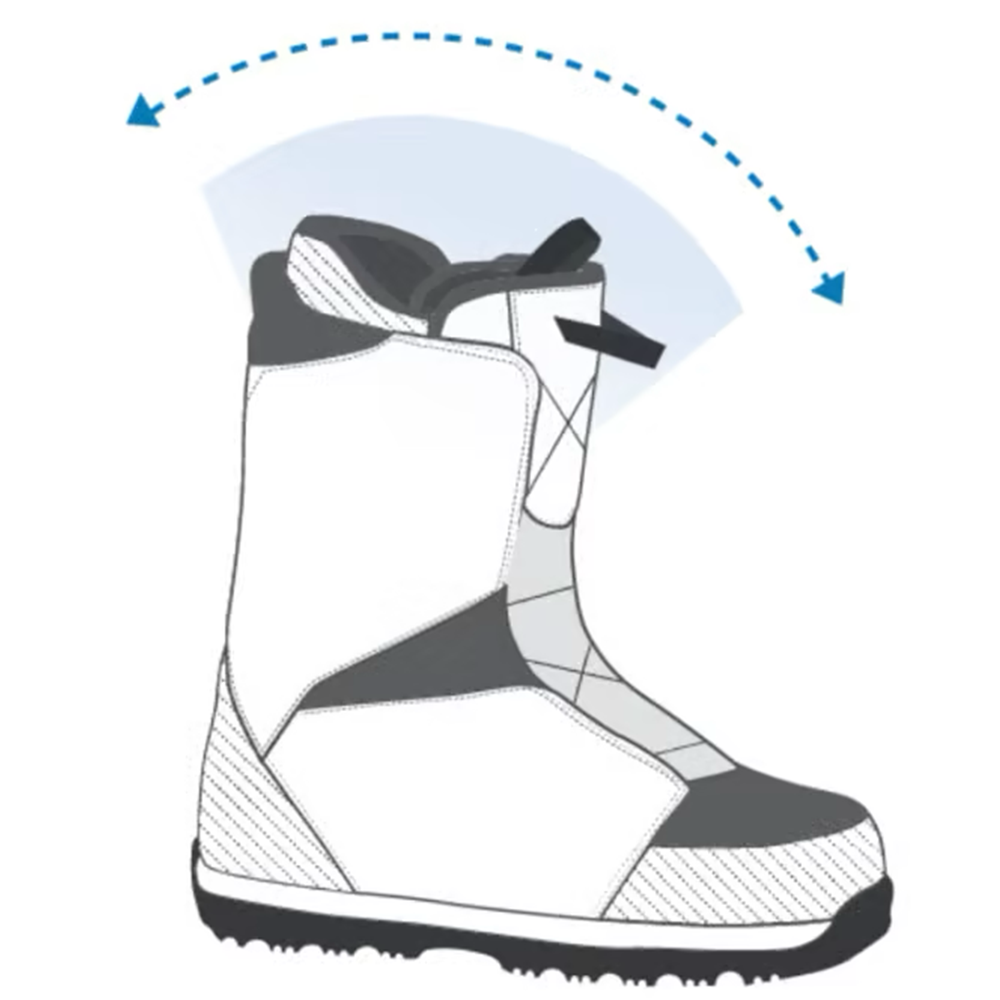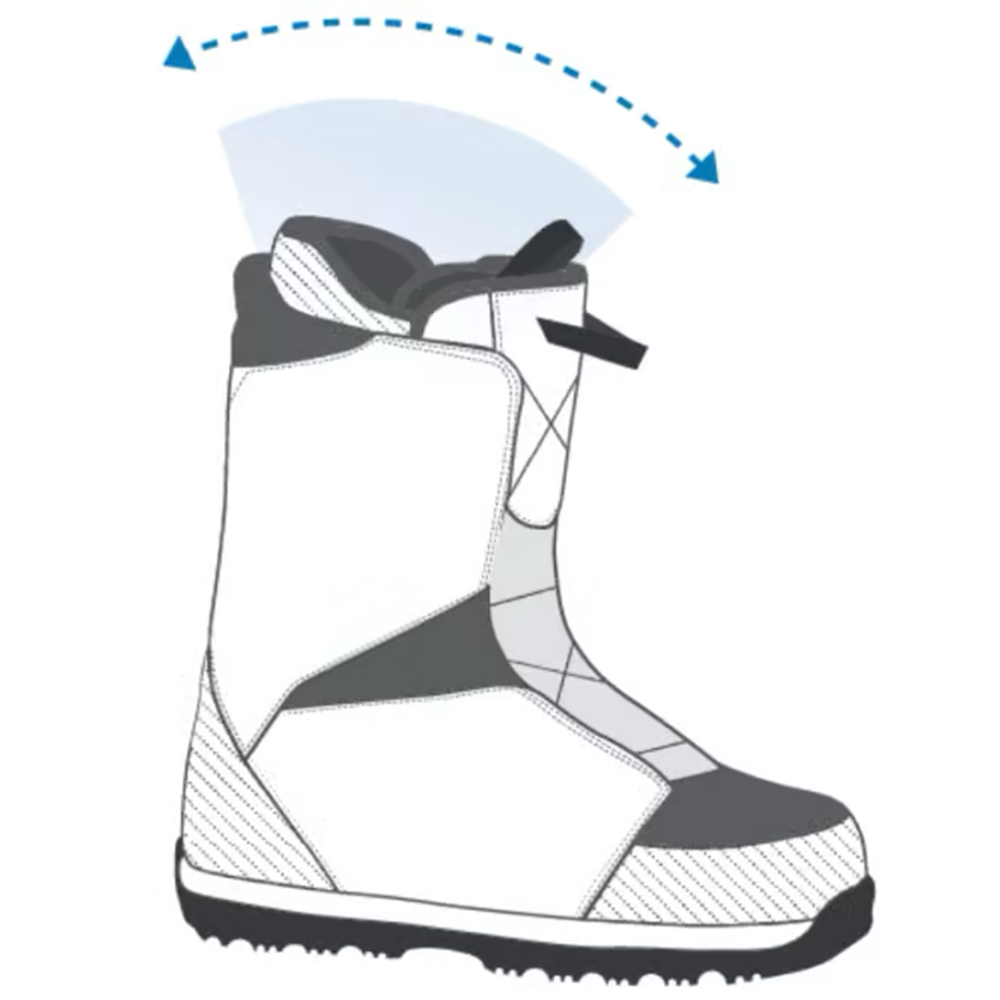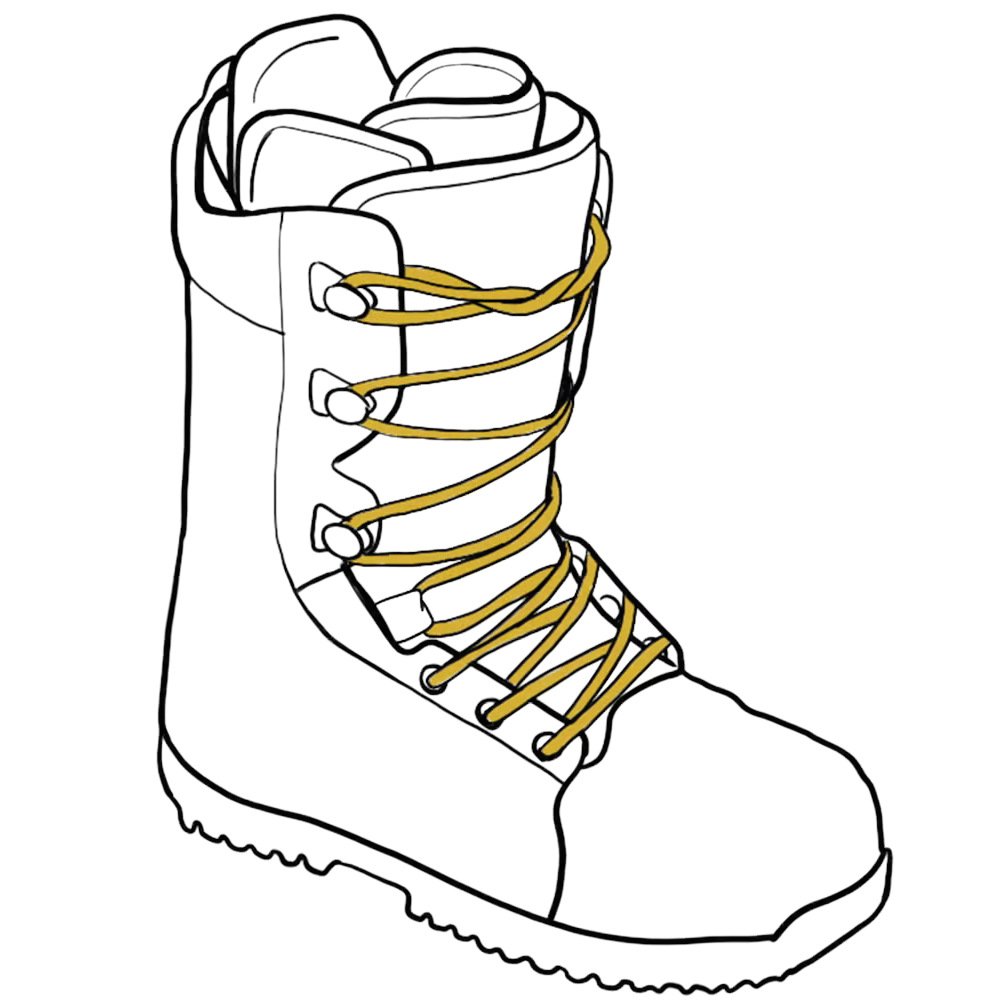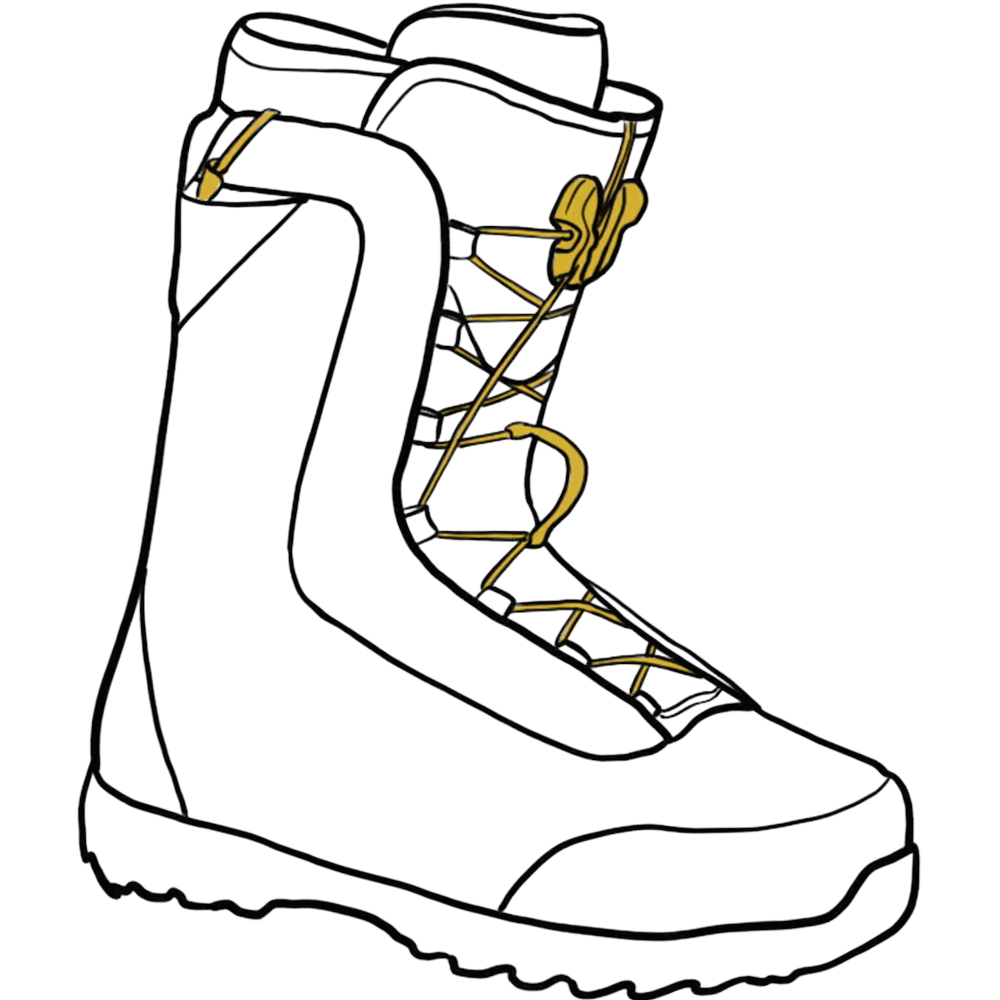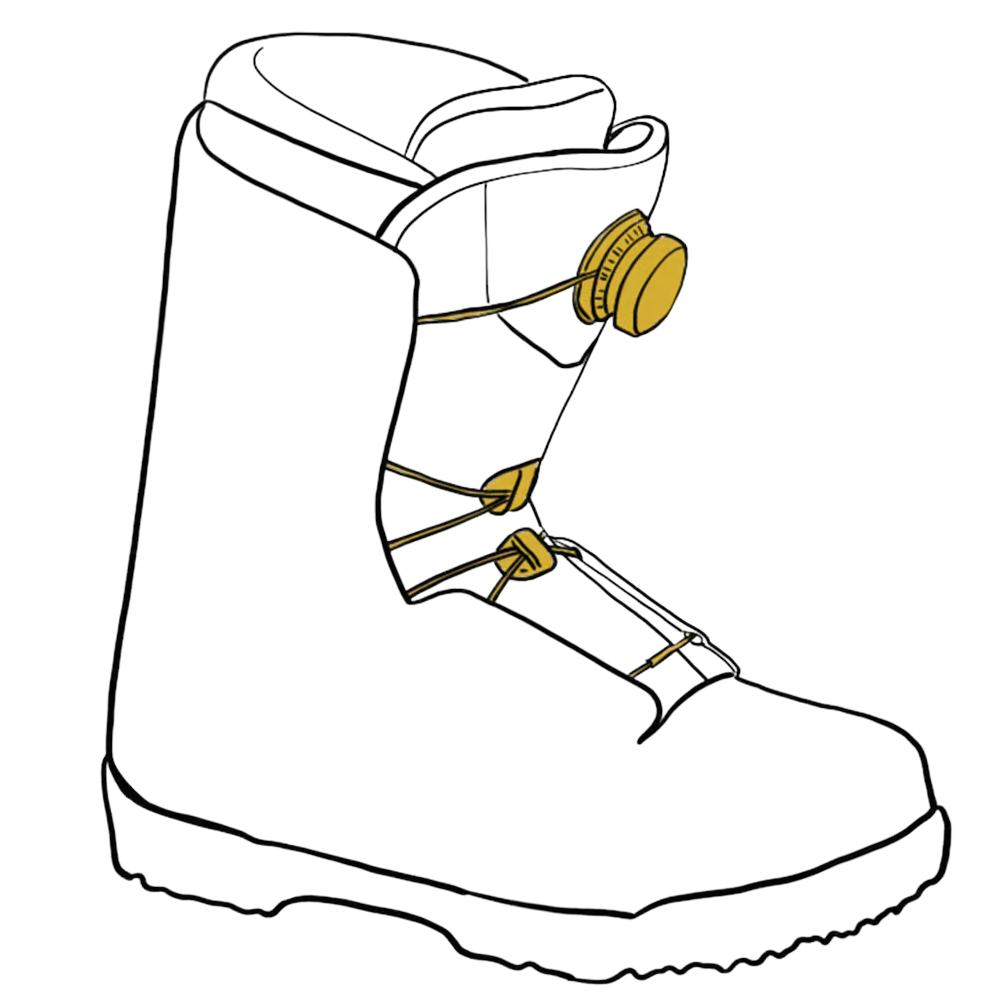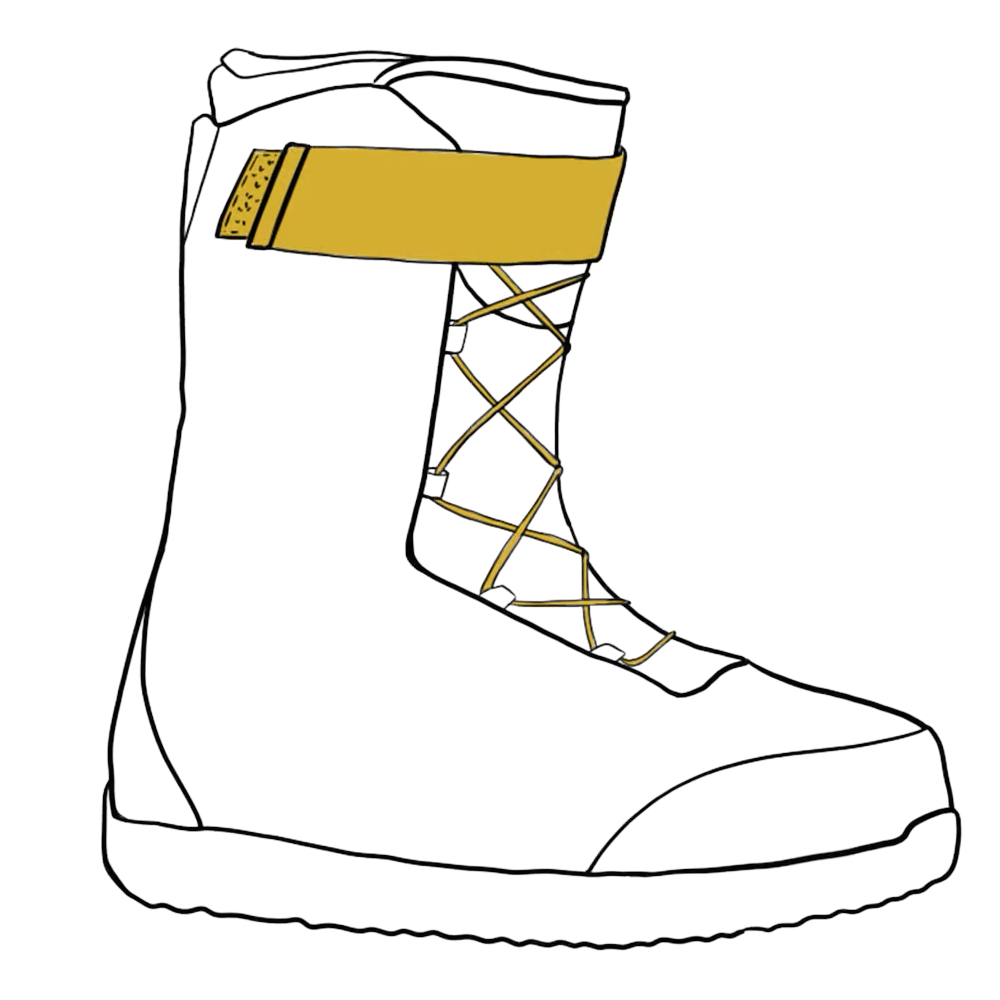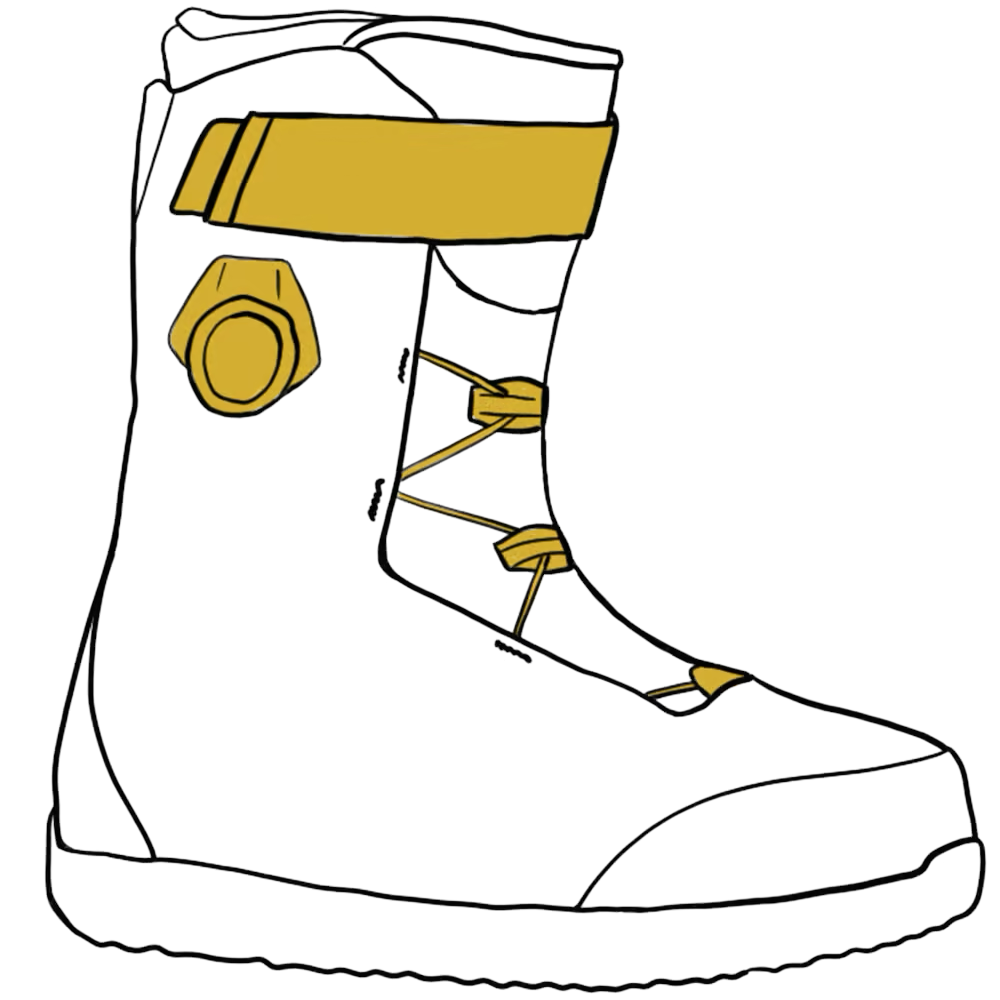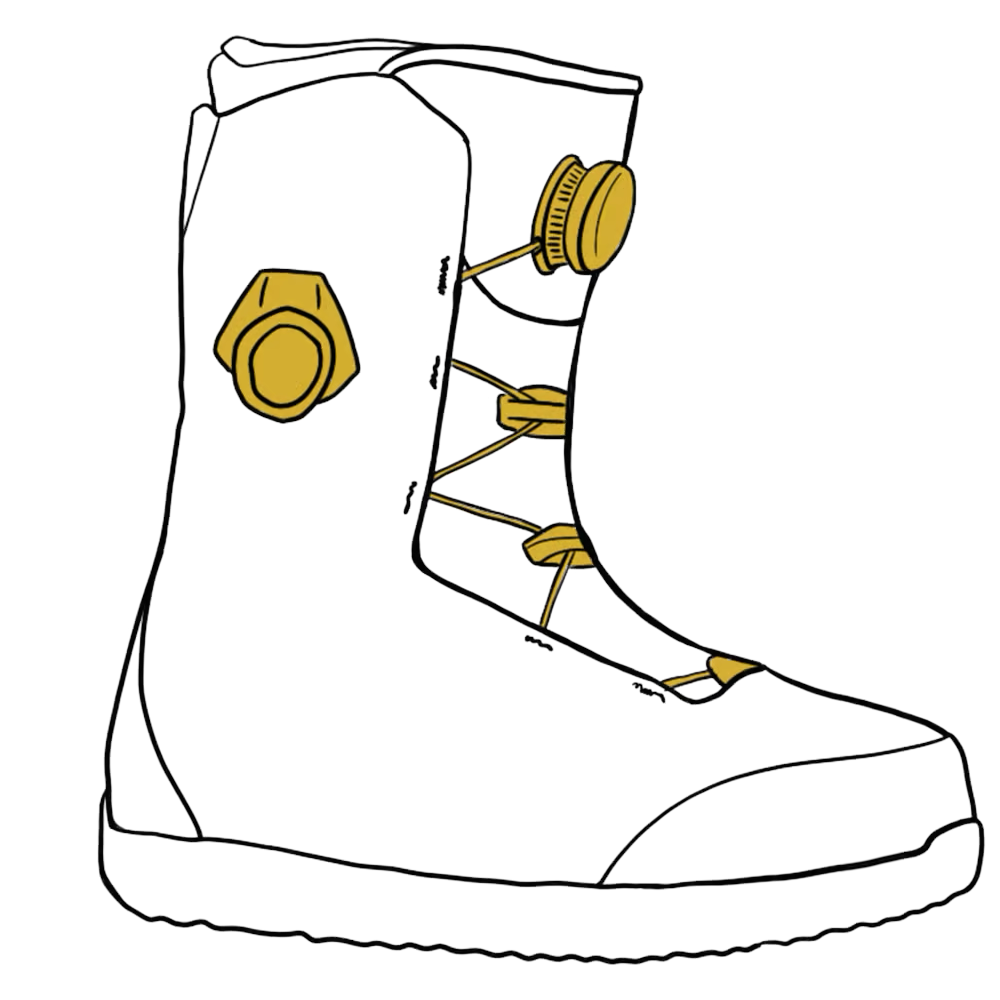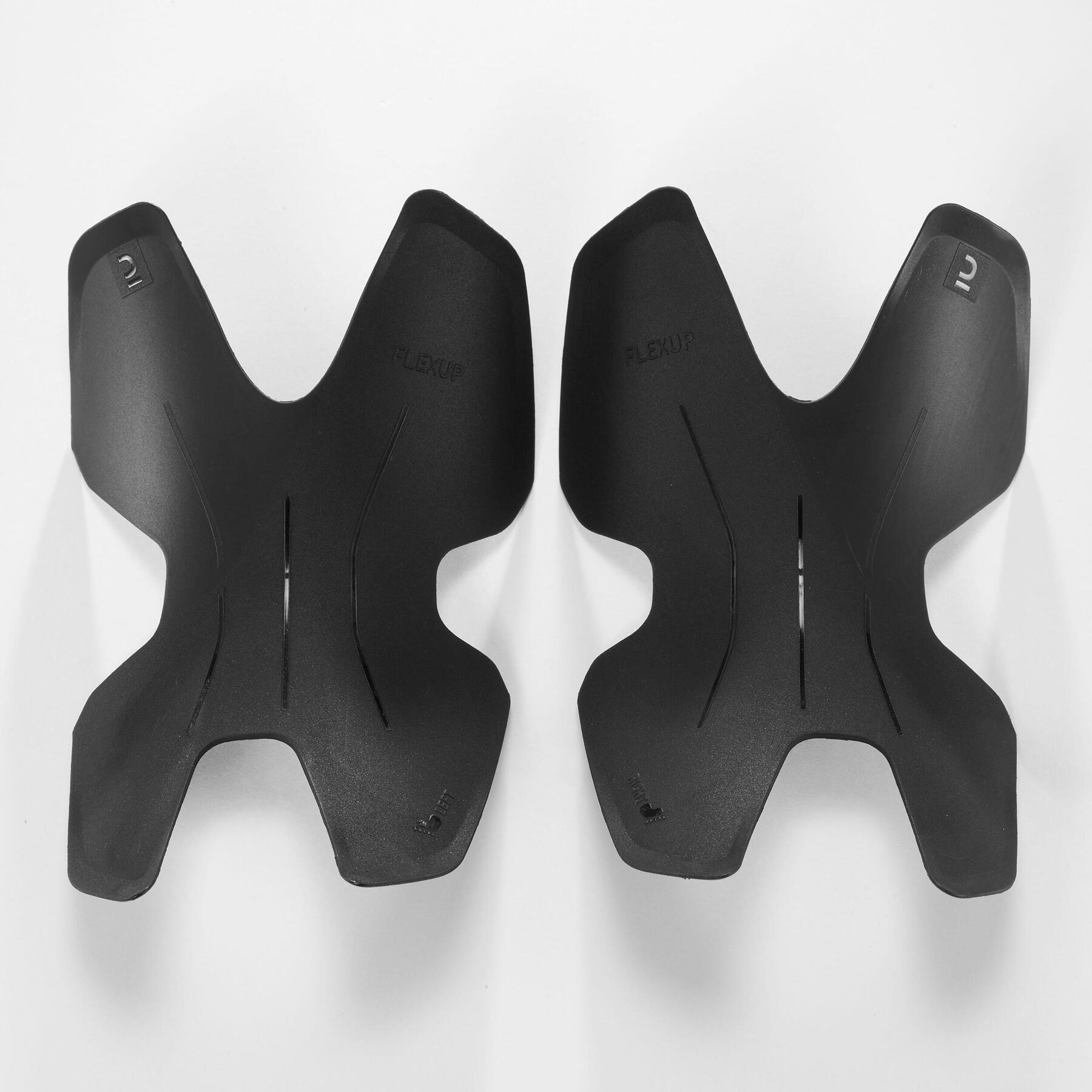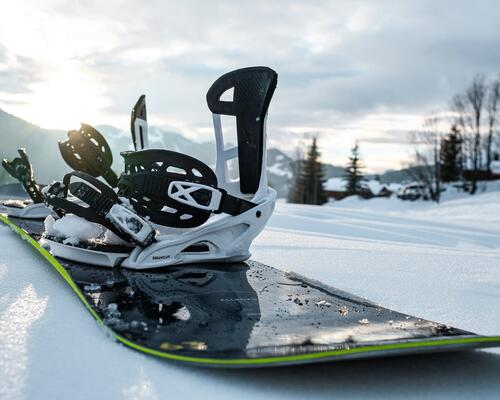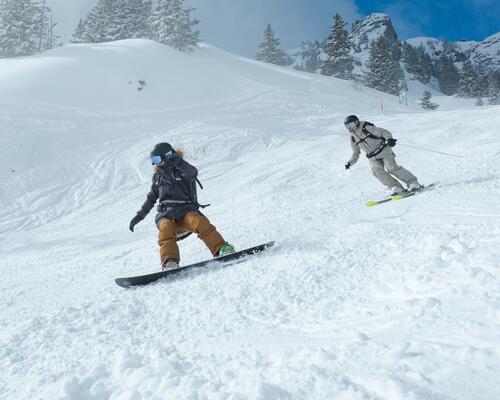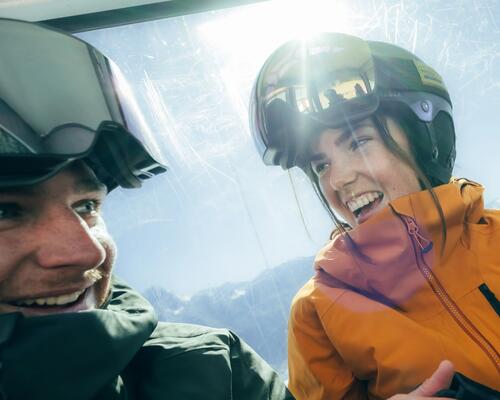1. Choose flex / rigidity according to your level
The flex rating of a snowboard boot quite simply specifies the boot’s level of stiffness. The higher it is, the stiffer the boot will be. Conversely, the lower it is, the more flexible it will be. Depending on your snowboarding experience, you’ll either choose a design with soft, medium or rigid flex.


